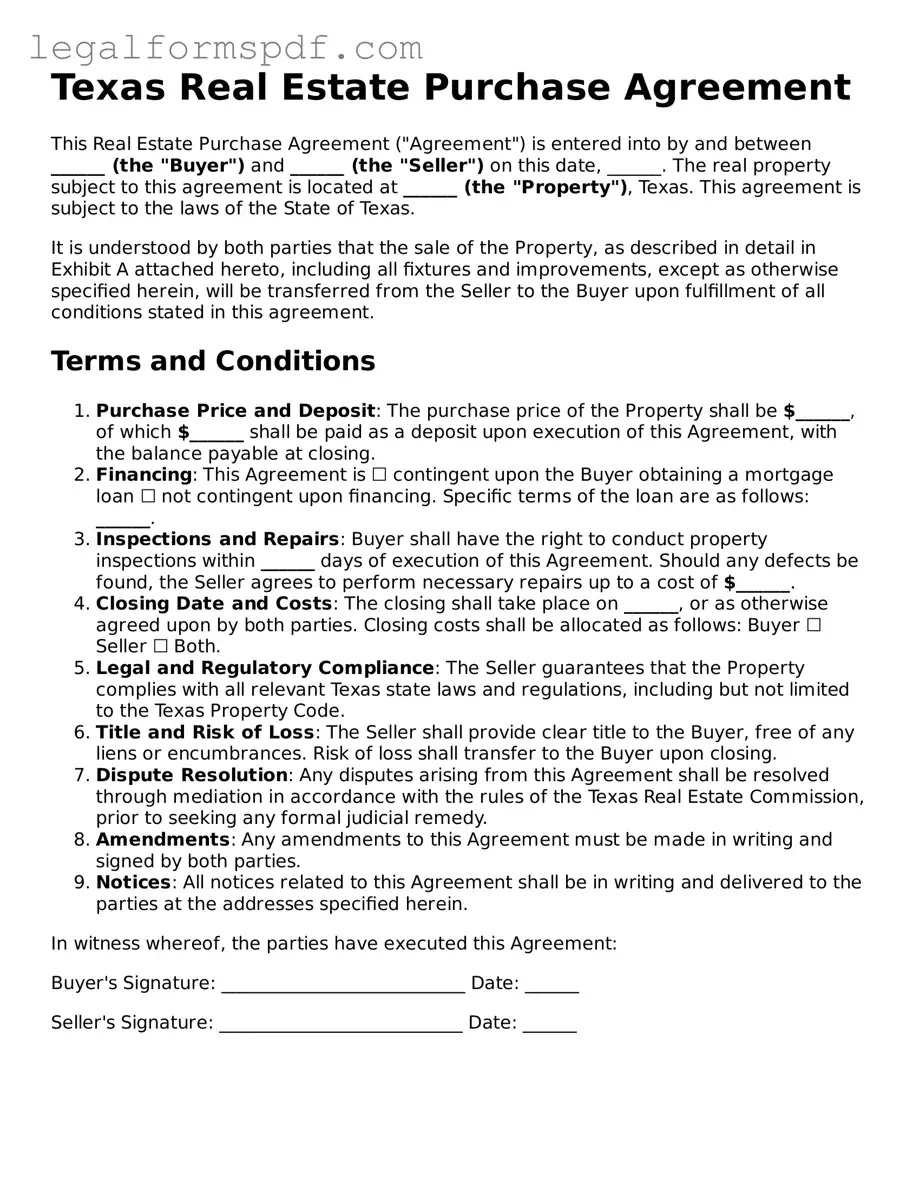The Bill of Sale shares similarities with the Texas Real Estate Purchase Agreement as it serves as a documented agreement between a buyer and seller over the sale of an item, often used for personal property like vehicles or equipment. Both documents outline the terms of the sale, including description of the item being sold, the purchase price, and the parties’ information, thus ensuring a mutual understanding and legal protection in the transaction.
Lease Agreements, much like the Texas Real Estate Purchase Agreement, are legally-binding contracts, but differ in that they pertain to the rental of property rather than the sale. They cover terms of the rental arrangement, such as lease duration, payment amount and schedule, and responsibilities of each party, creating a framework for the rental relationship similar to how purchase agreements structure property sales.
The Warranty Deed bears resemblance to the Texas Real Estate Purchase Agreement in that it involves the transfer of property. However, it specifically guarantees that the seller holds clear title to the property and has the right to sell it, free from liens or claims. This document provides an assurance to the buyer about the status of the property that is similar in nature to the disclosures often found in real estate purchase agreements.
Quitclaim Deeds, while involving the transfer of property ownership like the Texas Real Estate Purchase Agreement, do not guarantee the title's status. They are often used between known parties, such as family members. This document effectively releases the seller’s interest in the property to the buyer, which can be likened to the finalization aspect of property sales in purchase agreements.
The Mortgage Agreement is akin to the Texas Real Estate Purchase Agreement in its role within real estate transactions, specifically regarding the financing aspect. This document outlines the borrower’s promise to repay the lender, detailed with terms including the loan amount, interest rate, and repayment schedule, similar to how purchase agreements detail the financial terms of the property sale.
The Promissory Note, often associated with real estate transactions, is similar to the Texas Real Estate Purchase Agreement as it documents the buyer's promise to pay a certain amount, either to the seller directly or to a lending institution. Although more narrowly focused on the financing aspect, both documents are integral to setting and understanding the financial obligations of the parties involved in the transaction.
The Home Inspection Report, while not a contractual agreement like the Texas Real Estate Purchase Agreement, provides crucial information that impacts the sales transaction. This report outlines the condition of the property, including any necessary repairs or problems, which can influence negotiations, price adjustments, or even the buyer's decision to proceed with the purchase, paralleling the information exchange in purchase agreements.
Title Insurance Commitment documents also share similarities with the Texas Real Estate Purchase Agreement by ensuring the buyer's protection against future claims on the property’s title. Though distinct in purpose, both documents serve to safeguard the interests of the transaction's parties, with title insurance specifically focusing on the validity of the property’s title and ownership transfer.
An Appraisal Report is indirectly related to the Texas Real Estate Purchase Agreement as it provides an expert's assessment of the property's market value. This valuation is critical in determining the appropriate purchase price and is often a requirement of lenders before financing is approved, paralleling the agreement's role in finalizing the sale terms based on accurate property information.
The Closing Statement, or HUD-1, is closely related to the Texas Real Estate Purchase Agreement as it details the final financial transactions in the property sale. This document itemizes the funds paid at closing, including down payment, fees, and credits, reflecting the agreed-upon terms in the purchase agreement and ensuring that all financial aspects of the sale are transparent and agreed upon by all parties.
